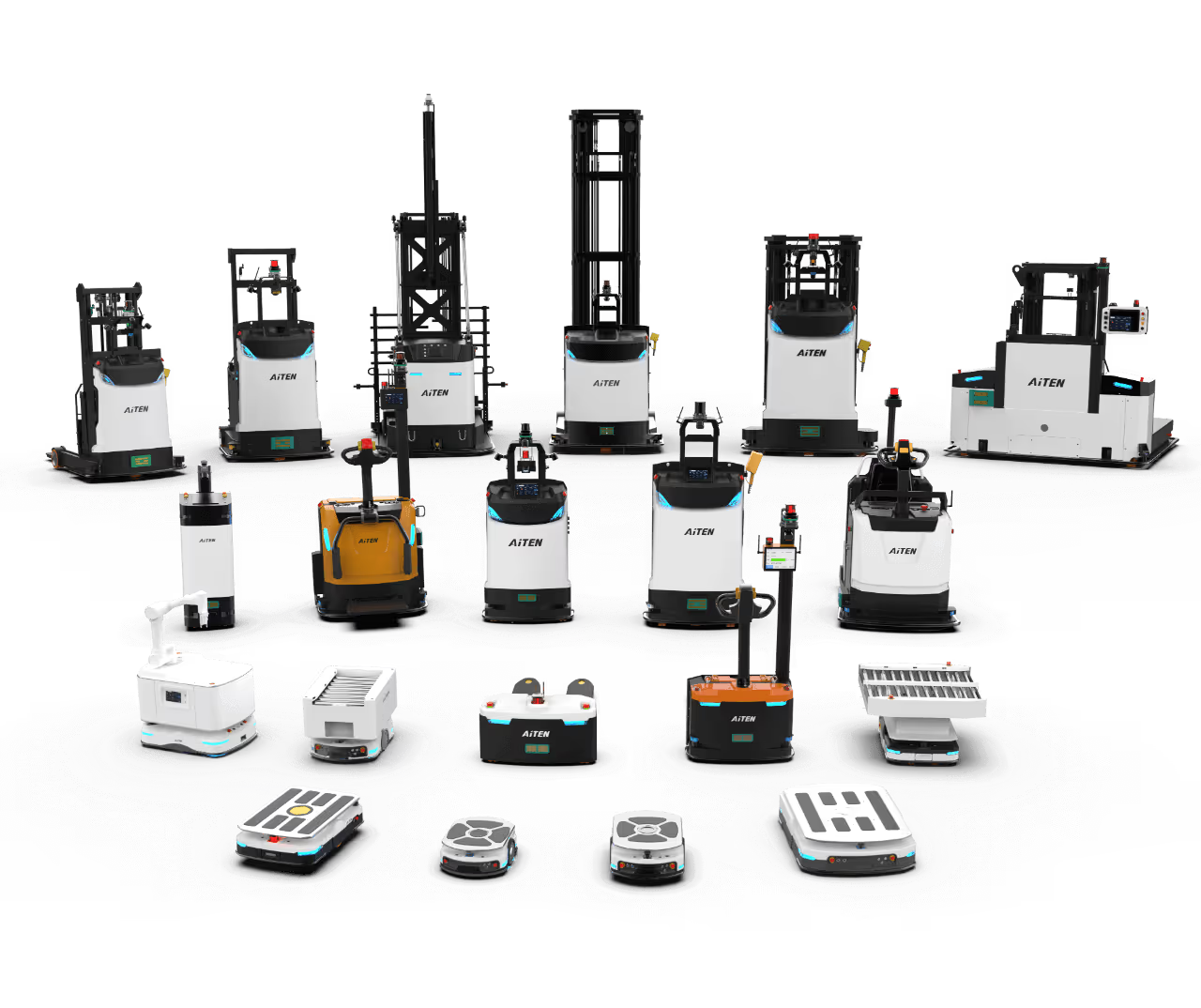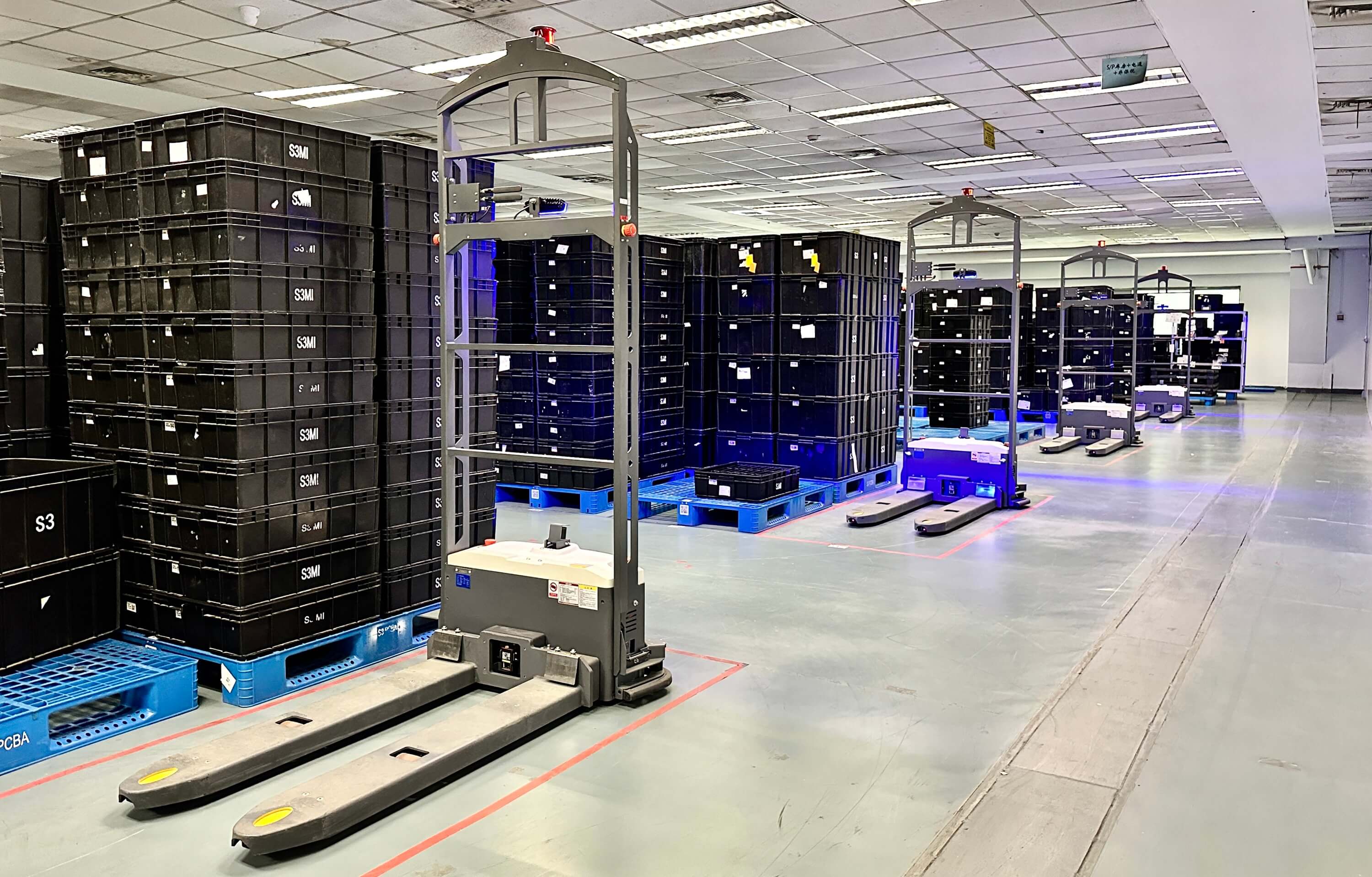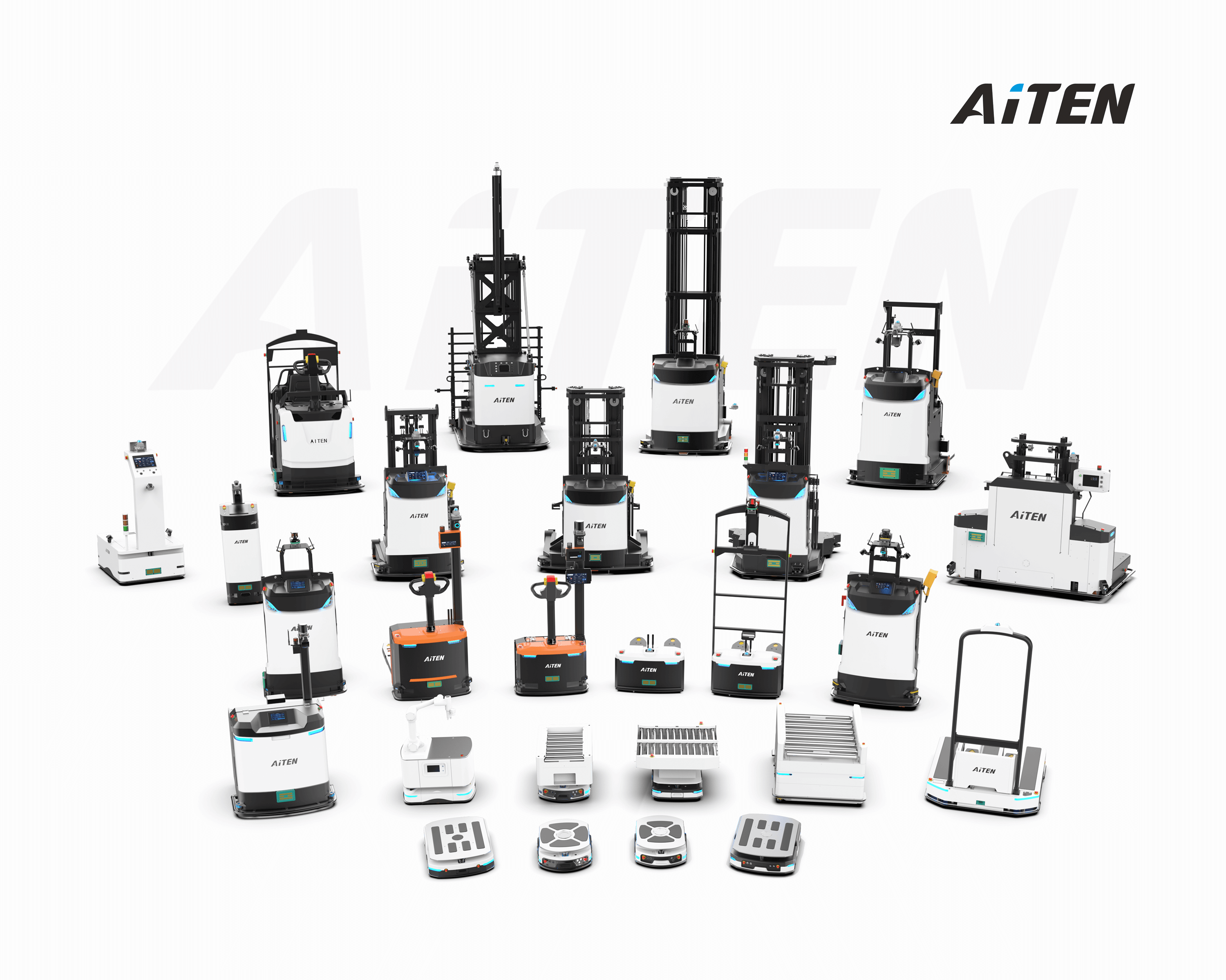How to Improve the Efficiency of Unmanned Forklifts: Five Key Strategies

In the accelerated development of intelligent manufacturing and logistics, unmanned forklifts (AGV/AMR forklifts) are being adopted by an increasing number of enterprises as core equipment to enhance warehousing and handling efficiency. However, it is a huge waste of resources if the expensive investment cannot be maximised. How to improve the efficiency of unmanned forklift use, so that it becomes cost cost-reduction and efficiency tool? This article will provide practical strategies.
Five Key Strategies
1. Reasonable planning of paths and workflow
The working efficiency of unmanned forklift trucks is largely affected by the layout of the warehouse. Therefore, before introducing unmanned forklift trucks, it is crucial to carry out reasonable planning and layout of the warehouse.
The operation path of unmanned forklifts directly affects handling efficiency and safety. The dynamic optimisation of routes through the AiTEN robot intelligent scheduling system is sufficient to achieve automatic route finding and path optimisation, which provides strong support for improving operational efficiency. At the same time, the introduction of the ‘traffic light’ channel strategy, high-priority tasks automatically lock the road section, avoiding traffic junctions, can significantly improve the work beat. Before actual use, companies can use the AiTEN Robotics Digital Twin System to visually simulate and optimise the workflow, and determine the best path and work strategy.
By analysing the travel path and time consumption of forklifts under different task scenarios, potential efficiency bottlenecks can be identified and targeted optimisation can be carried out to reduce empty travel and waiting time of forklifts.
At the same time, the operation process should be simplified to reduce unnecessary loading, waiting and transit links.
2. Improve map precision and positioning accuracy
Accurate positioning is the basis for the efficient operation of unmanned forklifts. The use of composite navigation technologies such as laser SLAM, visual navigation, and 2D code navigation can achieve more stable navigation effects in different environments. When modelling the map, obstacles such as equipment, shelves and workstations should be considered as much as possible to reduce errors and repeated corrections.
3. Selection to match the actual working conditions
Different types of unmanned forklift trucks differ in load capacity, lifting height, travelling speed, navigation methods, etc. Enterprises should select the right unmanned forklift truck according to their actual needs and operating scenarios.
There are many types of unmanned forklift trucks, including counterbalanced, reach trucks, etc. Enterprises should choose the right model according to their load demand, channel width and cargo size. Mismatched selection not only affects efficiency, but may even bring safety hazards.
- Narrow aisle: choose compact body (e.g. AiTEN Robotics' MP10, APX series robots) or narrow aisle AGVs (e.g. AiTEN Robotics' AR series) that support ‘automatic fork spacing’, which can increase storage density by 30%.
- Workshops with many dynamic obstacles: choose 2D SLAM, 3D SLAM or laser fusion navigation according to the complexity of the environment and accuracy requirements.
For small warehouse space, frequent cargo handling and lightweight scenarios, choose compact and flexible counterbalanced unmanned forklifts with small turning radius; for warehouses that need to store and handle goods on high shelves, choose forward-shifting unmanned forklifts or stacker-type unmanned forklifts with high lifting heights and precise positioning functions.
How to choose between automated forklifts and AGVs for your warehouse?

4. Good equipment operation and maintenance, and fault management
As a kind of high-tech equipment, an unmanned forklift needs regular maintenance and repair to ensure that it is always in good working condition and performance.
Improving the use of efficiency can not be separated from stable operating conditions. It is recommended that enterprises carry out regular equipment inspection and maintenance, and establish a fault early warning system to reduce the downtime caused by faults. At the same time, ensuring that technicians can respond and deal with problems quickly is an important guarantee for maintaining high efficiency.
Through the development of detailed maintenance plans and inspection standards, in strict accordance with the plan to implement maintenance work, can effectively improve the reliability and stability of equipment, extend the service life of equipment, and thus ensure work efficiency and safety.
5. Deep integration with WMS/WCS system
The unmanned forklift should be seamlessly connected with the warehouse management system (WMS) and control system (WCS) to achieve automatic task issuance, real-time status feedback, and intelligent coordination of scheduling. The deeper the system integration, the more timely the forklift response, the smoother the operation, and the higher the overall efficiency.
- Avoiding ‘Idle-Busy Inequality’: The intelligent system ensures a balanced distribution of tasks, avoiding some forklifts being idle while others are overloaded.
- Efficient Traffic Control: Intelligent avoidance and sequence management of complex intersections and narrow passages, significantly reducing waiting time.
- Real-time optimised response: When forklift trucks fail or tasks change, the system can re-schedule in seconds to minimise the impact.
Successful Case References
- Warehouse in the communications industry: AiTEN enhances warehouse efficiency for China Telecom with advanced AGV management system
- An automotive parts manufacturer: AiTEN's customised solution achieves 30% increase in warehouse utilisation for automotive factory with confusing logistics management
- New energy company: How can handling robots optimise logistics and warehousing? AS15 handling robot solutions for the new energy industry
Key Considerations for Improving the Efficiency of Unmanned Forklifts
- Clear objectives and ROI: Clearly define efficiency improvement objectives (e.g., task volume, turnaround time, cost savings) and continuously evaluate the input-output ratio.
- Step-by-step implementation and iteration: Pilot the system in localised scenarios and gradually roll it out after accumulating experience.
- Emphasis on data value: Operational data is a gold mine for continuous optimisation, and an effective data analysis system must be established.
- Supplier selection and co-operation: Select suppliers with strong technical strength and fast service response to establish long-term partnerships.
About AiTEN Robotics
As a company specialising in intelligent logistics solutions, AiTEN Robotics has consistently focused on the ‘smart factory’ scenario, deeply integrating technological innovation with industry needs. It has provided comprehensive services to over 200 manufacturing clients worldwide: Leveraging a full range of material handling robot product portfolios to cover diverse material handling scenarios, we have developed an industry-grade intelligent scheduling system to enable efficient collaboration among multiple devices. Through a comprehensive lifecycle service system spanning pre-sales planning, deployment and implementation to operations optimisation, we empower enterprises to achieve logistics intelligence transformation, continuously driving the digital upgrading and high-quality development of the manufacturing industry.
Conclusion
Enhancing the efficiency of unmanned forklifts is not only a technical issue, but also a systematic project of management and application. Enterprises need to start from the path planning, positioning accuracy, equipment selection, operation and maintenance system and system integration and other dimensions, continuous optimisation, to truly give full play to the maximum value of automated handling, to achieve a revolutionary change in logistics operations - higher efficiency, lower costs, stronger competitiveness.
If you are looking for more efficient and intelligent unmanned forklift solutions, please contact us. We will provide you with tailor-made overall handling optimisation solutions.









_%E7%94%BB%E6%9D%BF%201.avif)

